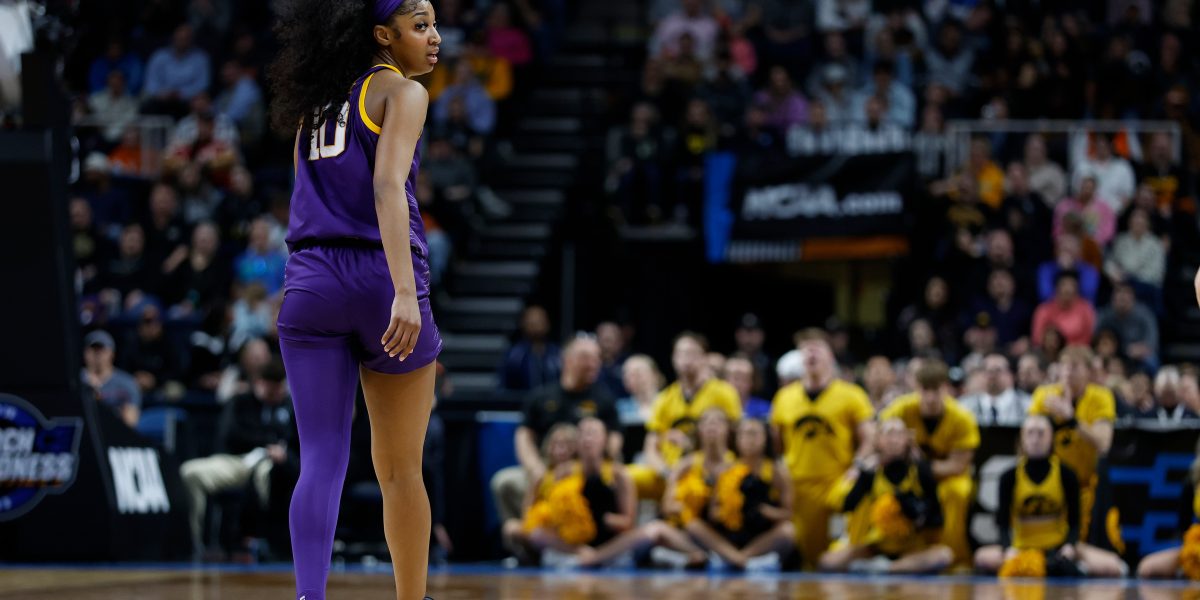Anyone watching former LSU standout and current Chicago Sky rookie Angel Reese can’t help but notice how she can run the floor and block shots from pretty much anywhere. But there’s another thing that might catch the eye before the start clock even begins: The forward hits the court wearing a one-leg compression tight.
Turns out, her garment of choice is more than a fashion statement. It plays double duty to give her the confidence she needs to continue to dominate on the floor.
When asked about her signature on-court style at a pre-game press conference in March, Reese explained she likes to cover a surgical scar when playing. “I had surgery two years ago on my shin,” she told reporters, referring to a tibia injury that occurred during her freshman year. After the procedure, Reese’s “confidence completely dropped,” as she explained in an interview on the I Am Athlete podcast, and she even questioned whether she wanted to return to her sport. (Thankfully, her surgery was successful, and she rebuilt her confidence once she was back on the starting team at the University of Maryland.)
That type of surgery involves inserting a rod into the shinbone, Sean Rocket, MD, a sports medicine doctor at Orthopedics New England who hasn’t treated Reese, tells SELF. The kind of procedure requires an incision that’s a few inches long in the front of the knee near the kneecap, which could leave a noticeable scar, he says.
It’s not just about the scar, though. Reese also wears the one-leg compression tight to pay tribute to her basketball idols. She told Nola.com that wearing the garment is a nod to two players she looks up to in the sport: Te’a Cooper, a guard for the Los Angeles Sparks, and A’ja Wilson, a Las Vegas Aces center.
Both women have also been known to sport the one-sided sleeve, and Reese summed it up succinctly: “It’s swag.”
Aside from the specific reasons Reese mentioned, a compression tight might also bring a few other benefits—both after an injury and also just for athletes in general, Brent Chuma, CSCS, a strength and conditioning specialist who works with injured athletes at Wellness in Motion Boston, tells SELF. A compression sleeve works by trapping heat close to the skin, which warms the tissue, boosts blood flow, and “increases muscle flexibility and range of motion,” says Chuma. Given Reese’s surgical history, her left leg might benefit from a little extra help warming up.
What’s more, a tight sleeve can give “a sense of security to the muscles” after surgery or injury, Dr. Rocket says. This may be subjective, he says, but can still be a benefit for athletes. The compression of the muscle and fascia—the thin layer of connective tissue that surrounds your muscles—can “improve proprioception, or feedback for where the leg is in space,” he says. That can be important in a sport like basketball, where players frequently jump and land in a pile or get jostled. “Their muscles need to know when to fire to stabilize their knee or ankle,” says Dr. Rocket. Without accurate proprioception, basketball players can be more prone to rolled ankles or injured knees.
